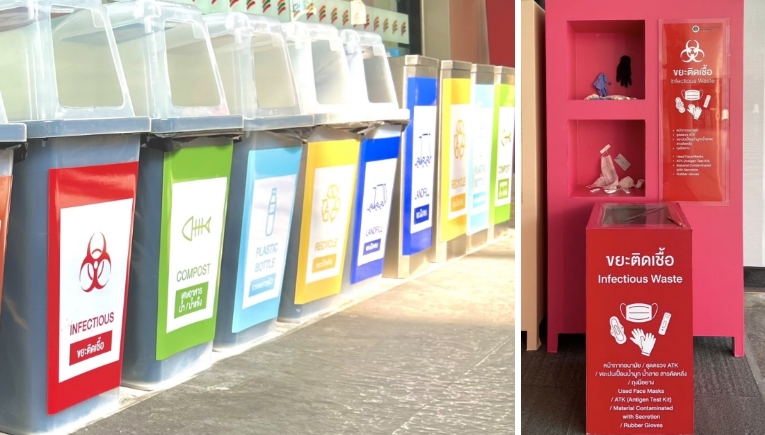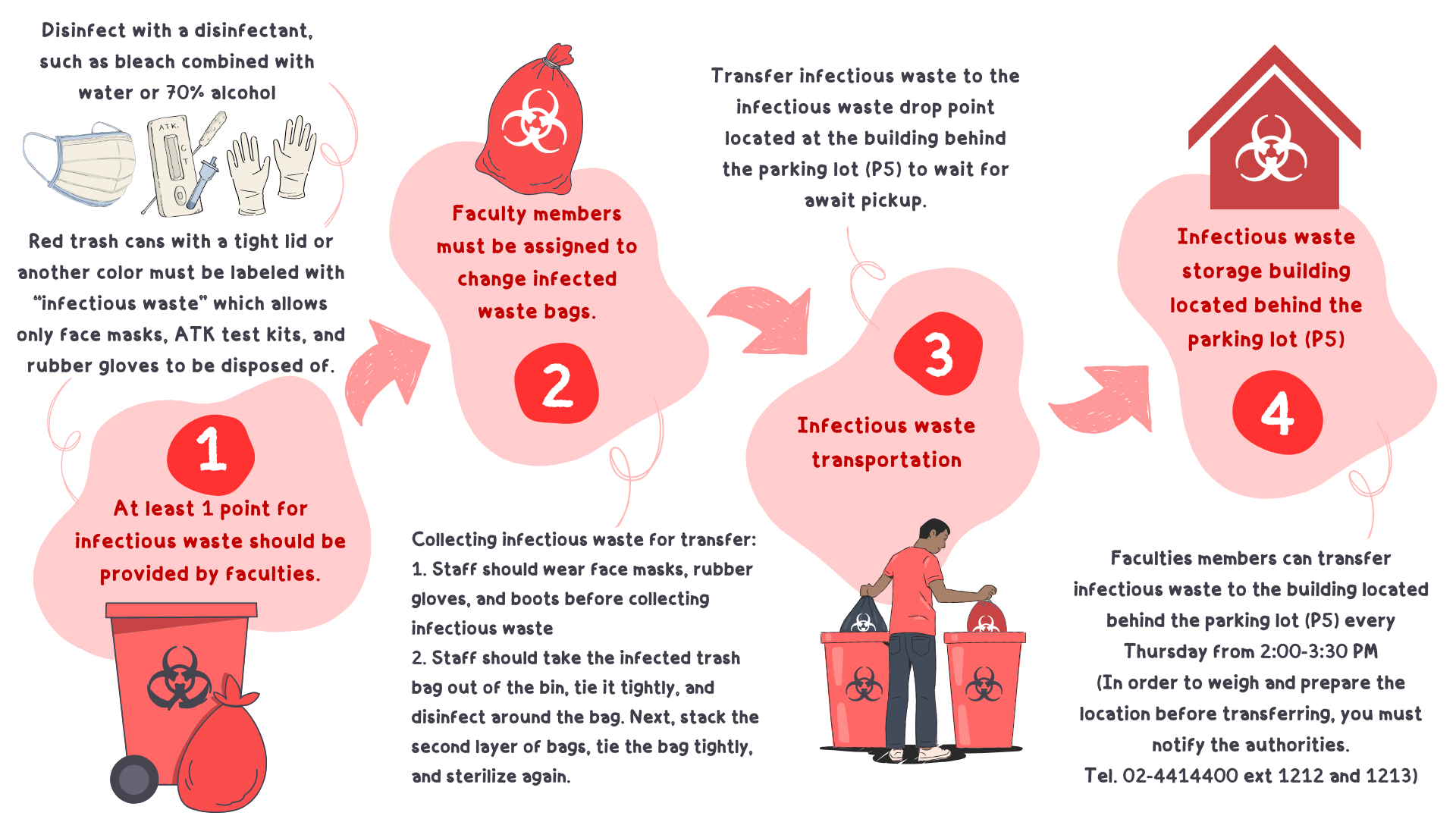Waste
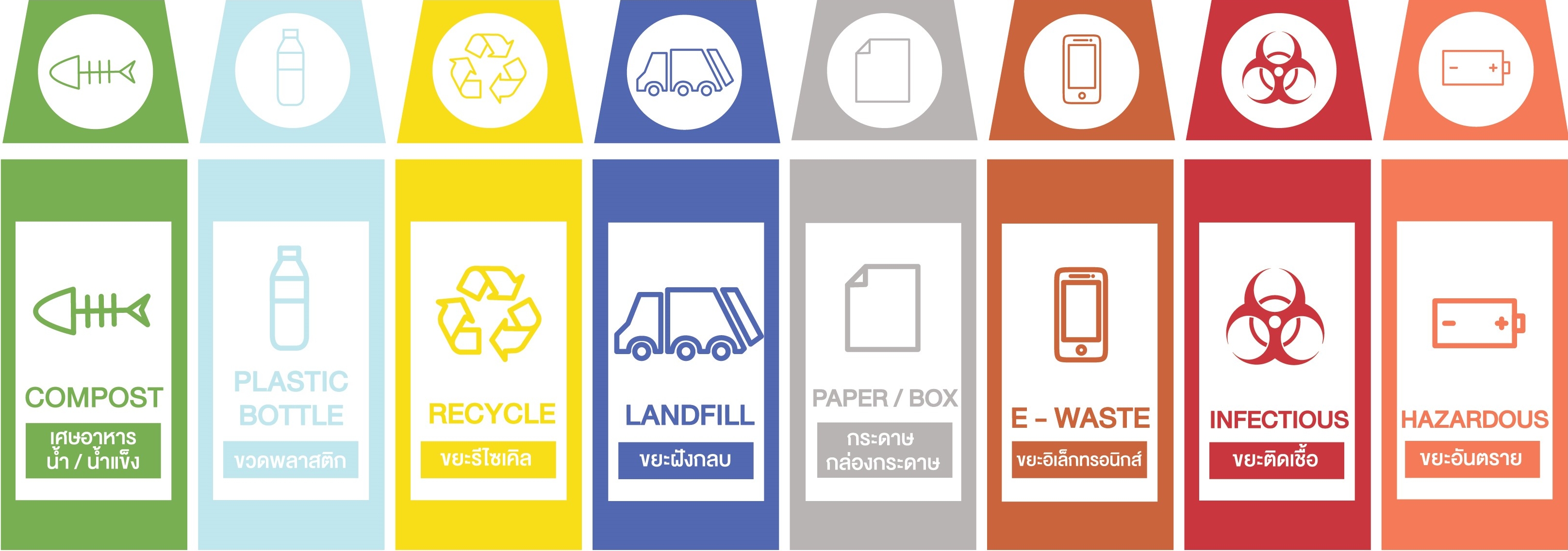
Mahidol University has established waste management policies and measures by categorizing waste into five main types: general waste, organic waste, recyclable waste, hazardous waste, and infectious waste. These categories cover both central and departmental areas to ensure the university develops an efficient waste management system and maintains a clean environment in line with the Sustainable Development Goals (SDGs).
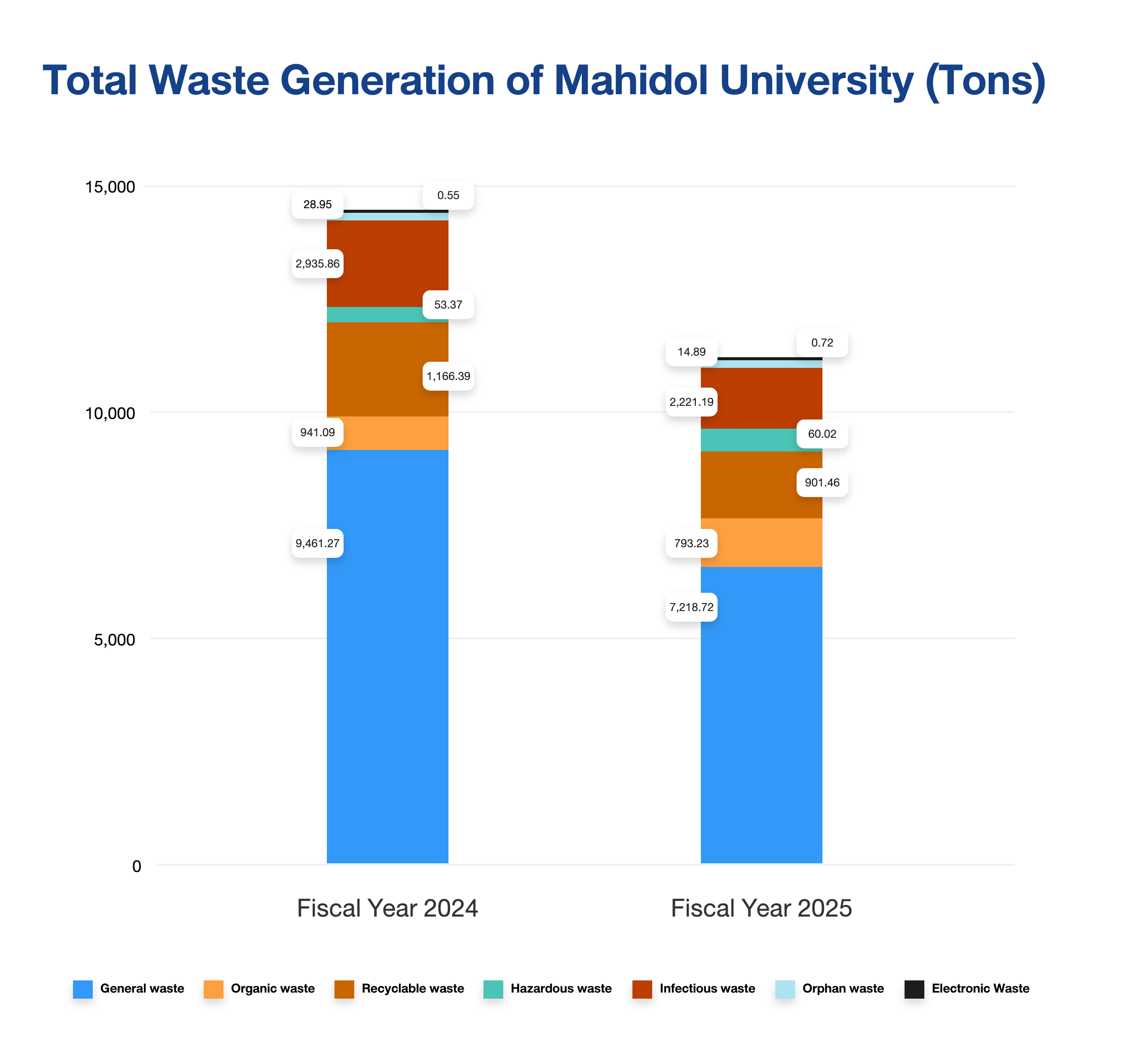
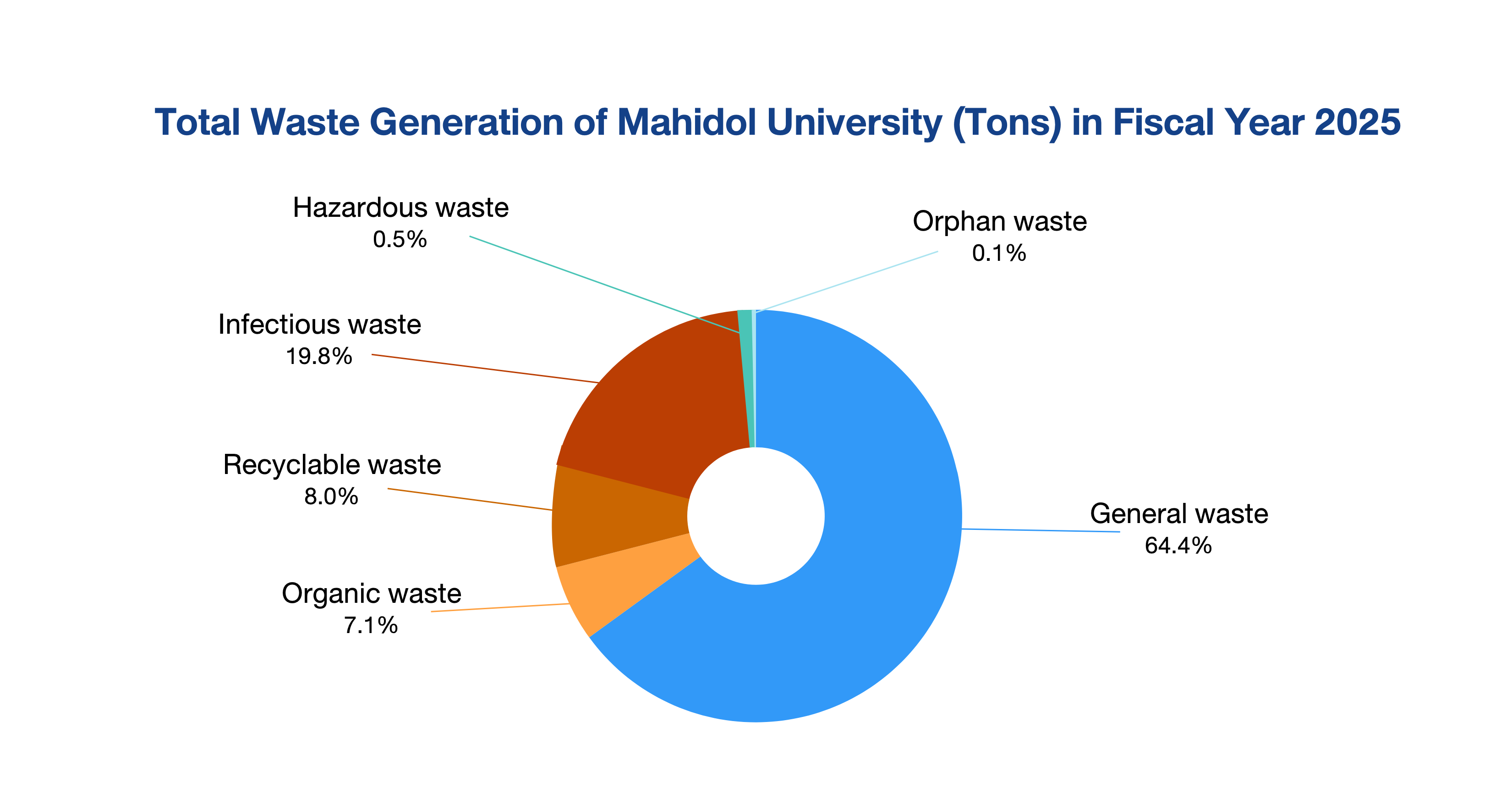
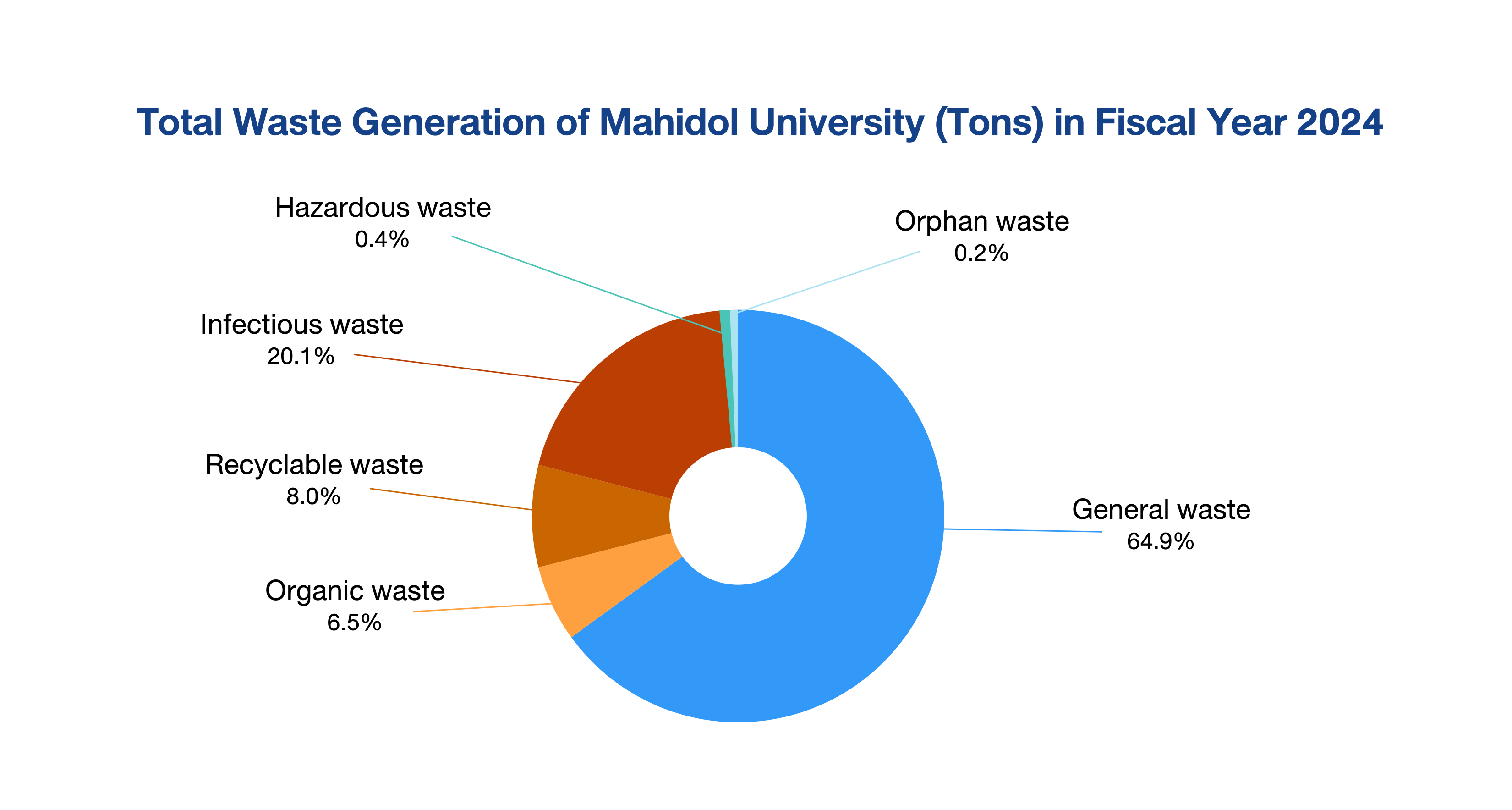
General waste refers to non-biodegradable and non-recyclable materials or items that are not economically viable for recycling or reuse, such as snack wrappers, condiment packets, contaminated plastic bags, foam containers, and food-stained paper or bags. The university uses the term "landfill waste" to raise awareness and encourage proper waste segregation to reduce the volume of waste sent to landfills. To support this initiative, waste disposal points have been set up throughout the campus, and six centralized waste collection points have been designated to prevent excessive waste accumulation that could lead to issues such as leachate or vermin. Waste is collected daily in the morning by Salaya Municipality for proper disposal at landfill sites or designated waste treatment facilities.
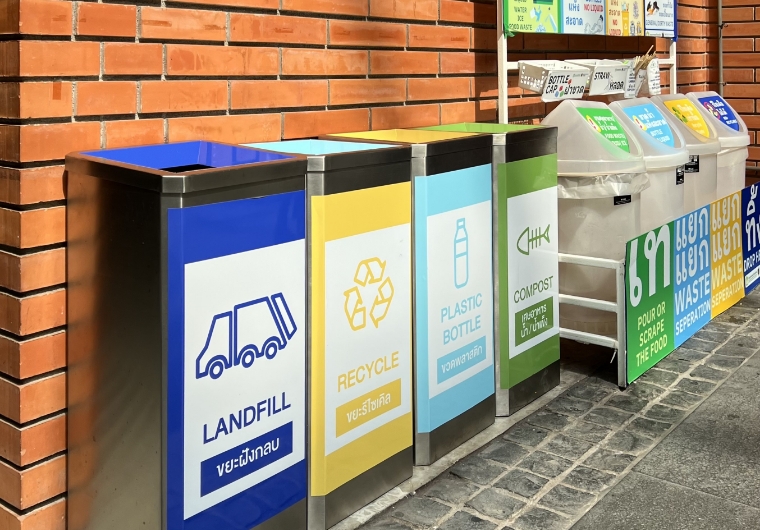

Mahidol University has implemented a policy to reduce landfill waste by promoting the separation of non-recyclable waste, referred to as "Orphan Waste." This includes materials such as cushioning foam, bubble wrap, clean snack wrappers, foil wrappers, soft plastic containers or cups, clothing, hats, shoes, toothbrushes, pillows, blankets, sports balls, expired medications, tires, document files (without metal), pens, and mouse pads. The university organizes orphan waste collection activities once a month at the Environmental Conservation Building, after which the collected waste is sent to government-authorized companies for conversion into fuel energy.
Recyclable waste refers to used materials that can be processed and reused, such as paper, glass, plastic, beverage cartons, and metal scraps. The university has placed recycling bins across the campus and promotes systematic waste sorting through its "Recycling Waste Bank" program. Students, staff, and external participants can join the program by registering as members and depositing (selling) recyclable waste.
Additionally, the university promotes the sorting of two specific types of recyclable waste: plastic bottles and paper. Given the large number of offices generating paper waste, there are efforts to separate and reuse paper. For plastic bottles from beverage consumption, the university encourages cleaning and proper sorting to facilitate recycling or repurposing, such as producing upcycled clothing.
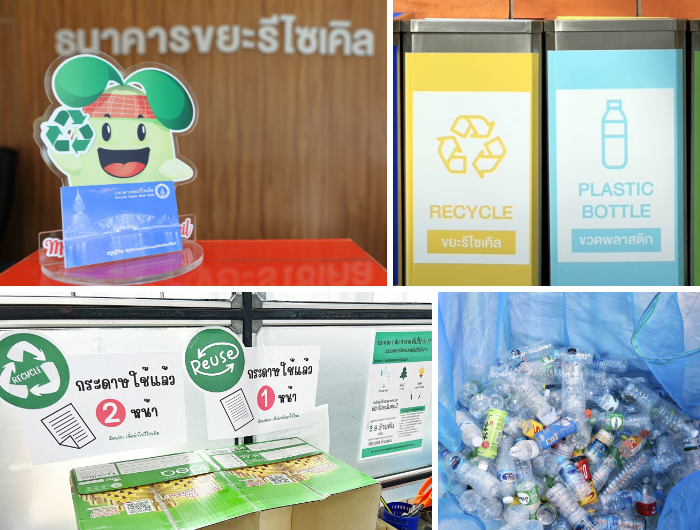
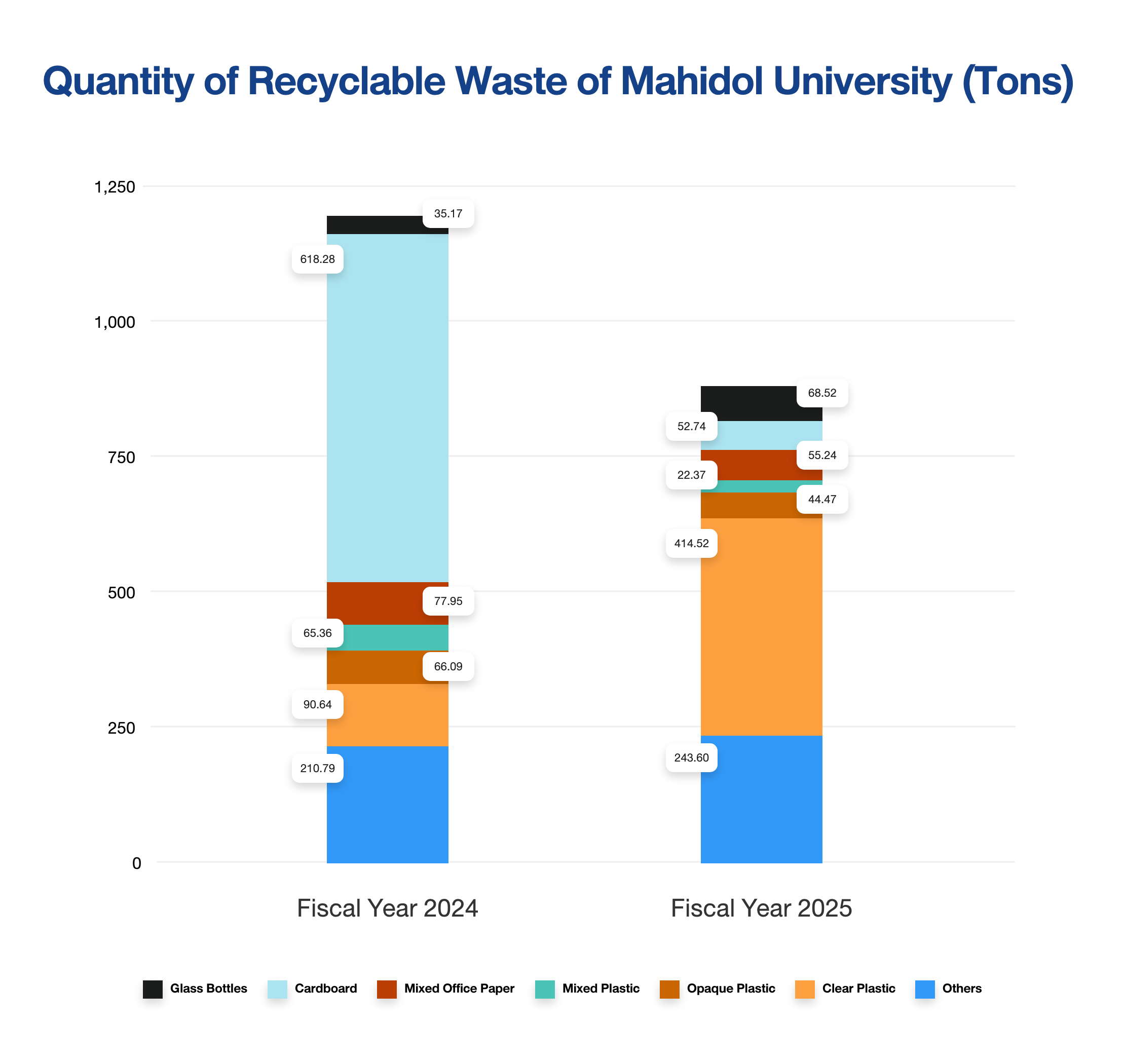
Waste Recycling Bank established in 2009. This campaign is to encourage divisions, students, and staff to change their mindset of waste and behavioral change to start sorting and bringing waste to the Waste Recycling Bank. The Waste Recycling Bank is similar to commercial bank where you can deposit and withdraw cash. The difference is we deposit recyclable waste and withdraw them in cash. There is a software to collect member’s data which is reliable and verifiable.
Everyone can be a member of Waste Recycling Bank. The process of application is easy using only an application form with an identification card. After the date recorded on the system, a bank book will be given. Members can sell their sorted waste and withdraw in cash or deposit with the bank. The purchase price of recyclable waste is clearly announced and adjusted every three months based on the market price.
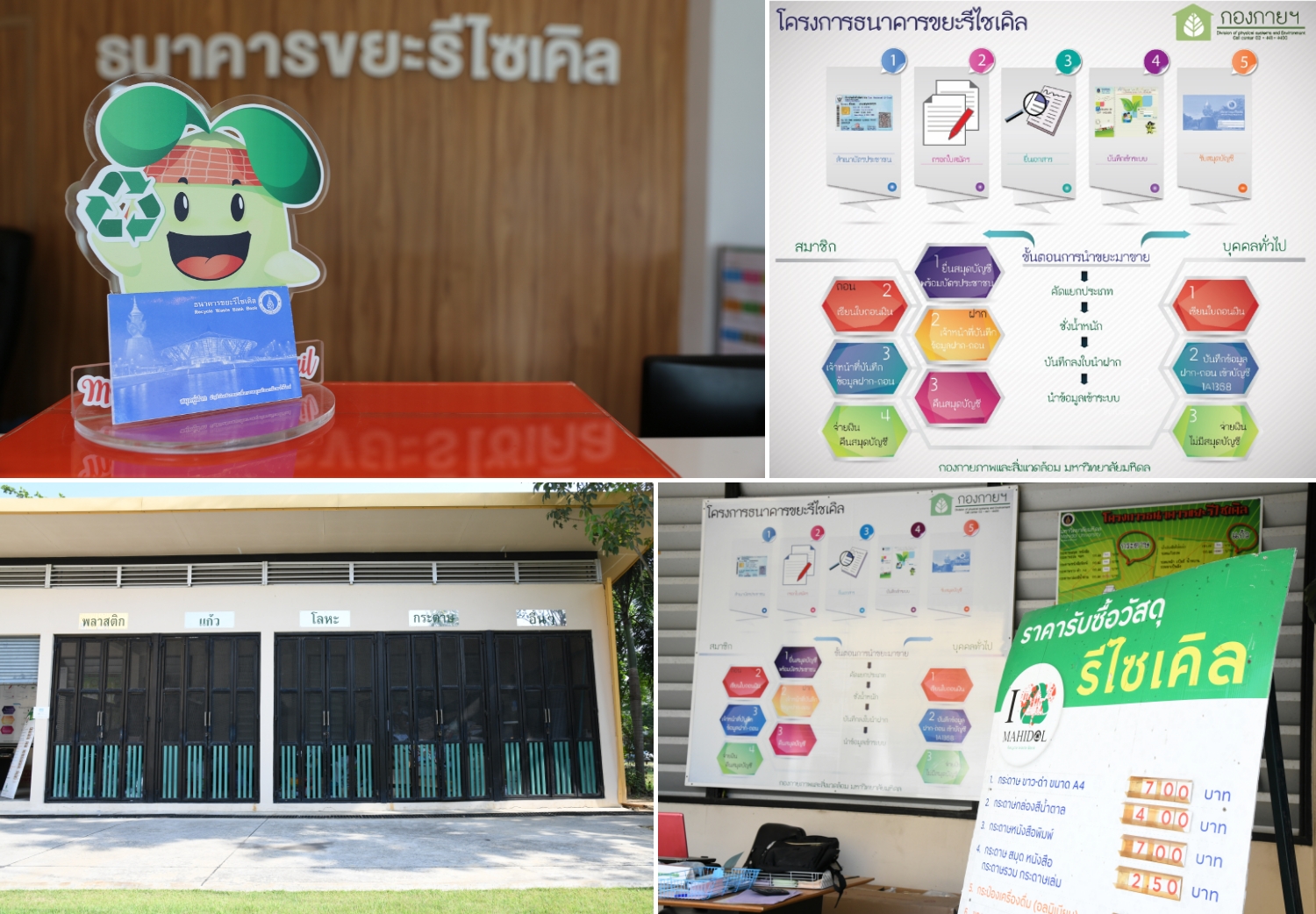
Currently, There are more than 2,500 members who have applied for the project and 5,000 general members who have a total amount of recycled waste of more than 2,900 tons, representing a total purchase of recycled waste of more than 16 million baht, with a profit of 10% from sales. Recycled waste will be deposited into the environmental conservation fund. Mahidol University
The project has been running over 10 years. This is to bring recyclable waste of more than 2,900 tons for reuse purpose which separates recyclable waste from others. This also helps governmental waste management.
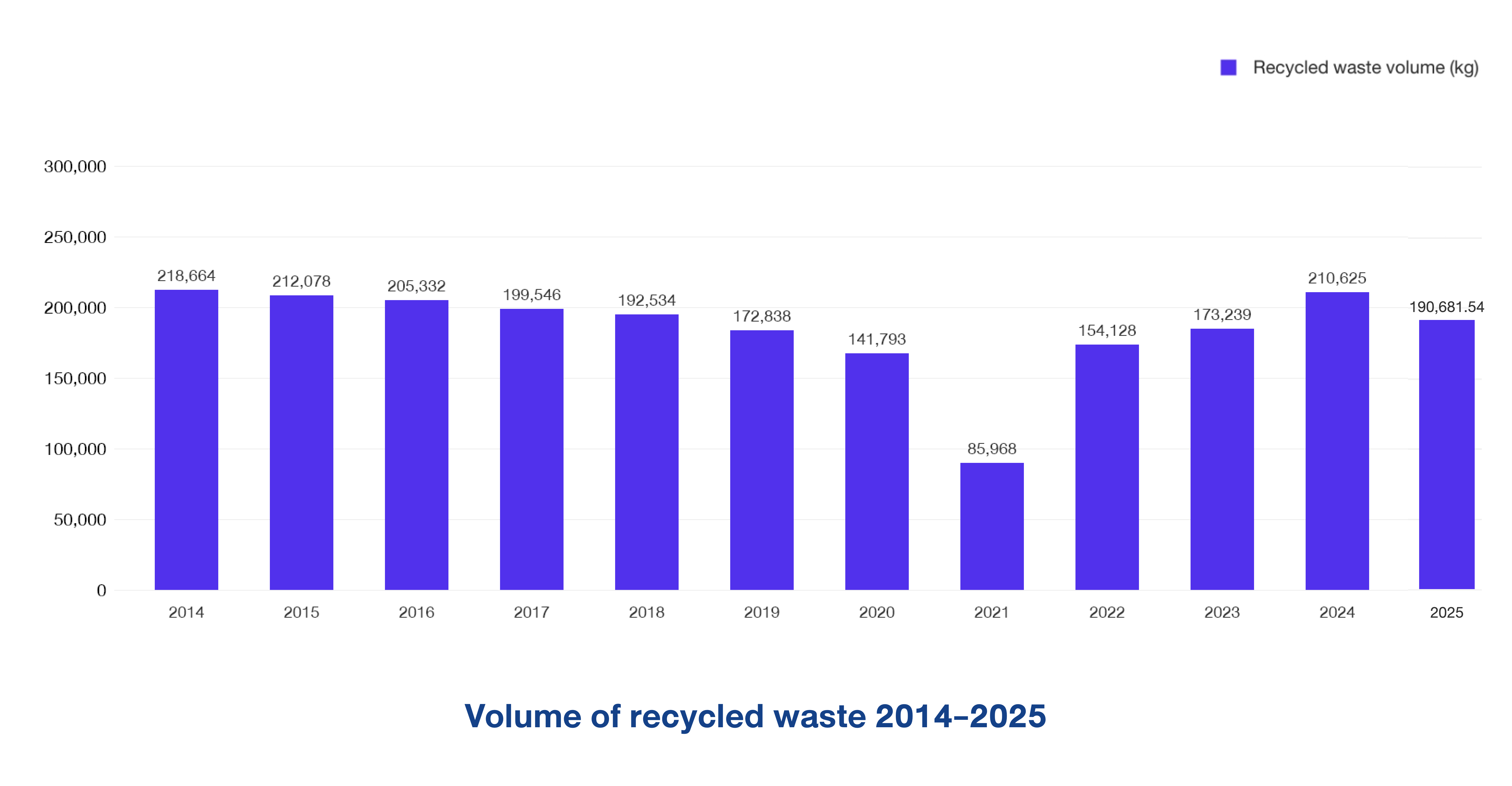
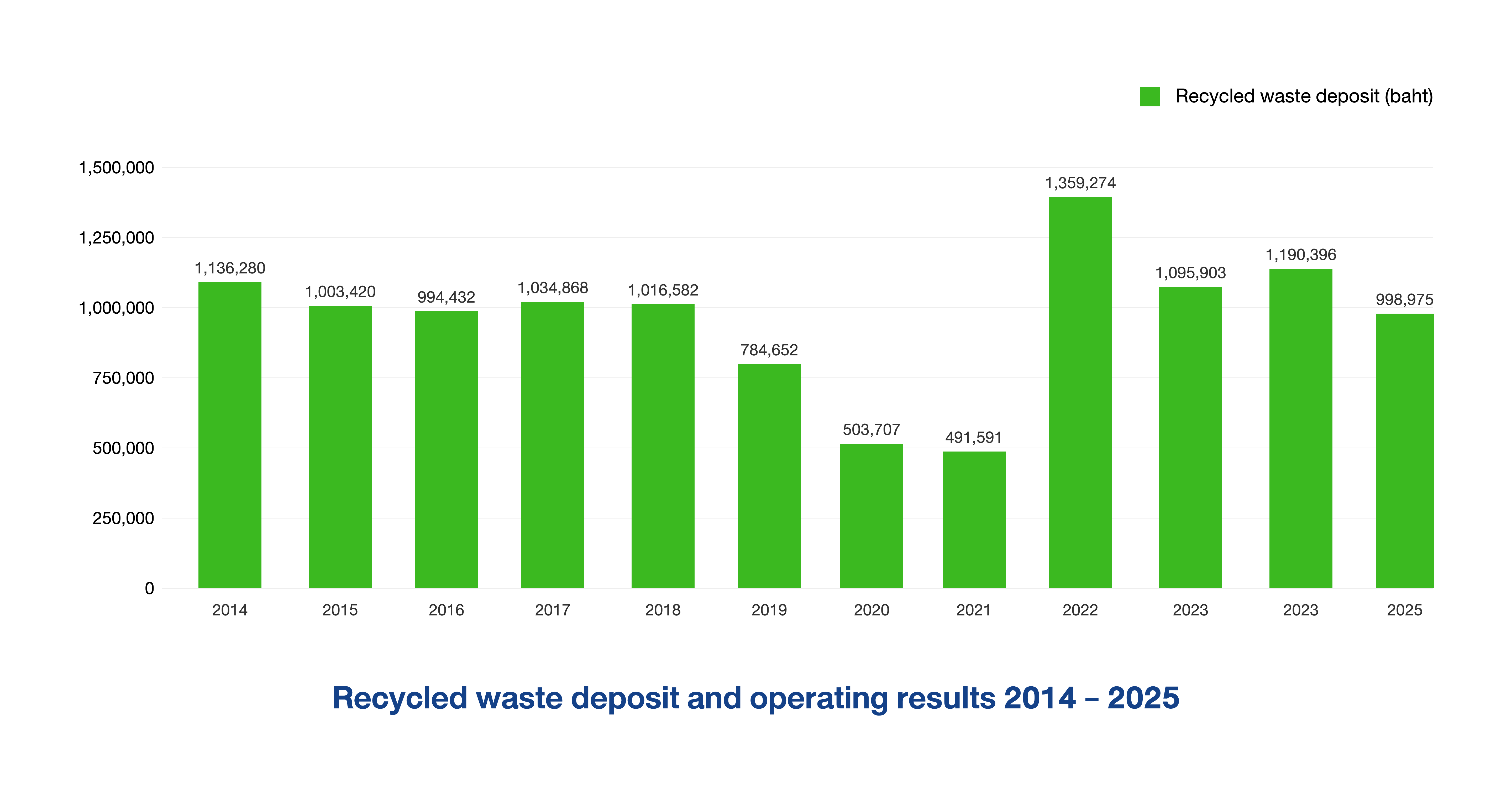
Organic waste refers to biodegradable waste, such as food scraps, twigs, and leaves. To ensure efficient waste management and reuse, the university processes food waste and green waste by shredding and composting them to produce bio-products, specifically organic soil enhancers called "Salaya Humus.”
Food waste collected from cafeterias and food scrap bins is fermented with microorganisms and shredded coconut husks using a 24-hour composting machine. The output is then bagged and left to decompose for 30 days before being used as organic soil enhancer for green space maintenance on campus.
Twigs and leaves are shredded into small pieces and used as raw materials for windrow composting for about a month. Afterward, they are sun-dried, finely ground, and left for three days before use or packaging.
Managing organic waste on campus not only reduces landfill waste and incineration but also creates value from waste by using it to maintain green spaces, lowering maintenance costs, and generating revenue for the university.
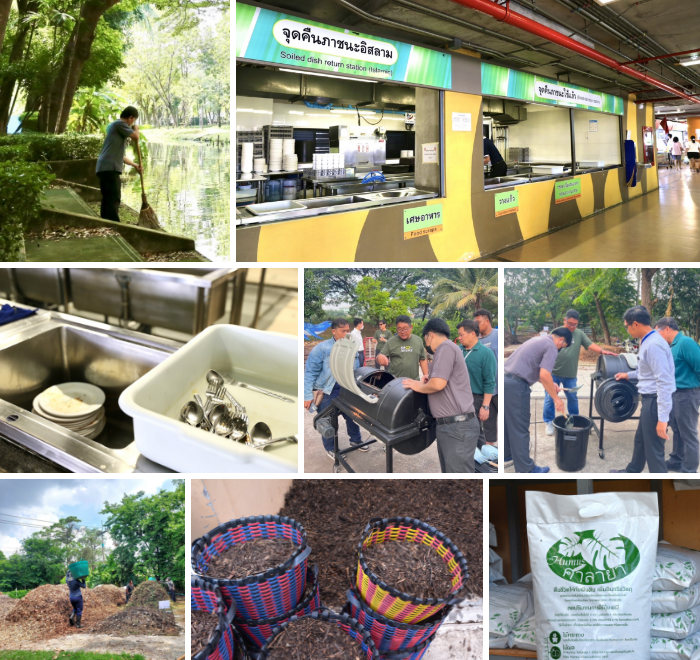
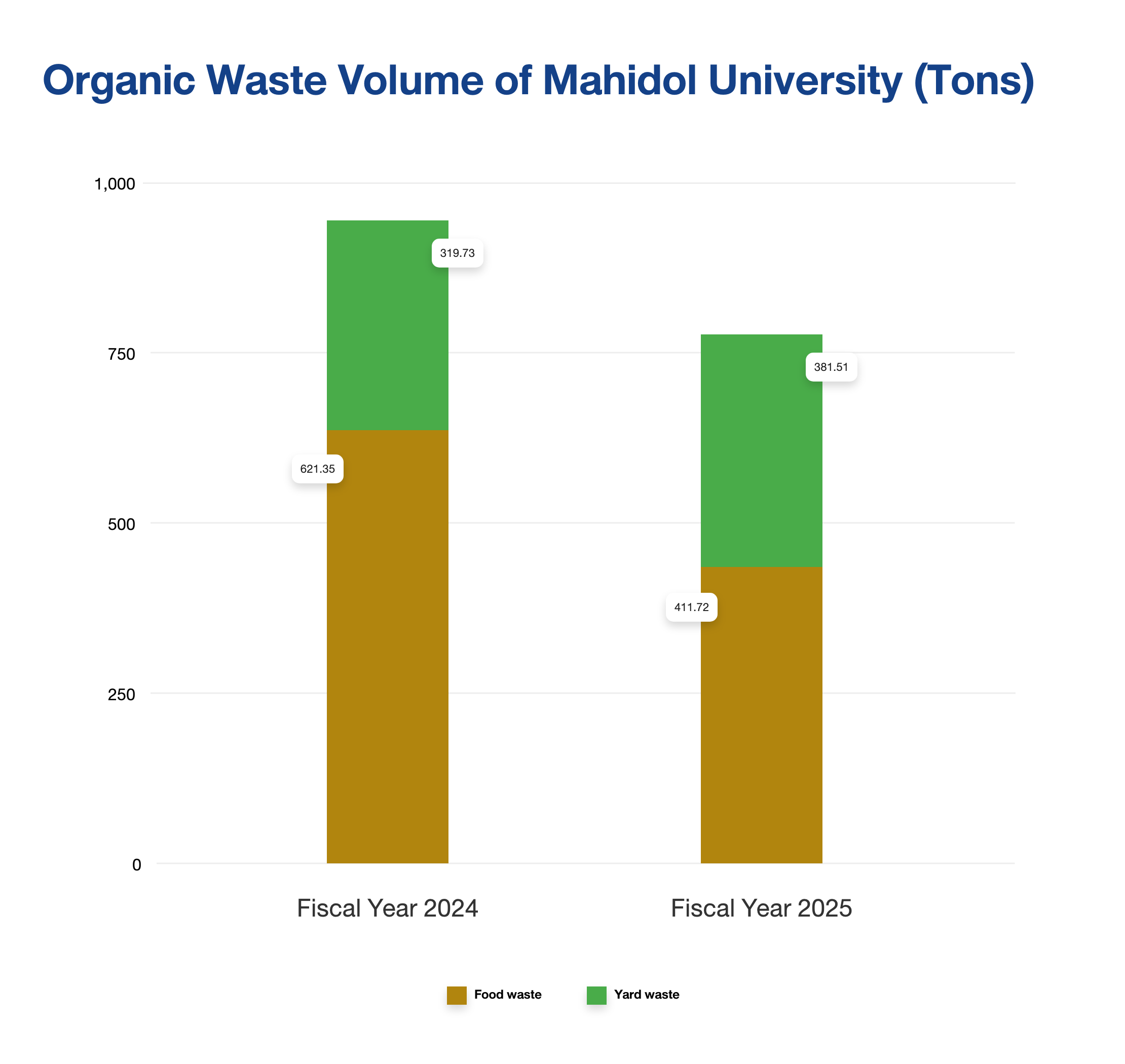
The production of humus (organic soil conditioner) started in 2008, utilizing branches and leaves from the university's departments and common areas to reduce burning, lower environmental maintenance costs, and promote reuse.
The humus production process begins with shredding branches and leaves, then piling them up and mixing them with cow manure. The composting process takes 30-45 days, after which the mixture is sun-dried and crushed into smaller pieces. The compost is left for about 3 days to allow microorganisms to settle before being used or packaged for sale. Since operations began in 2008, more than 409 tons of compost have been produced, valued at over 2.8 million baht, and the production site has become a learning center for various organizations visiting to study the process.

Currently, there are two types of humus available for sale:
1. Powdered Form
-
1. Unpackaged: 7 baht per kilogram
-
2. Packaged: 8 baht per kilogram
2.Granulated Form
-
1. Unpackaged: 30 baht per kilogram
-
2. Packaged: 30 baht per kilogram
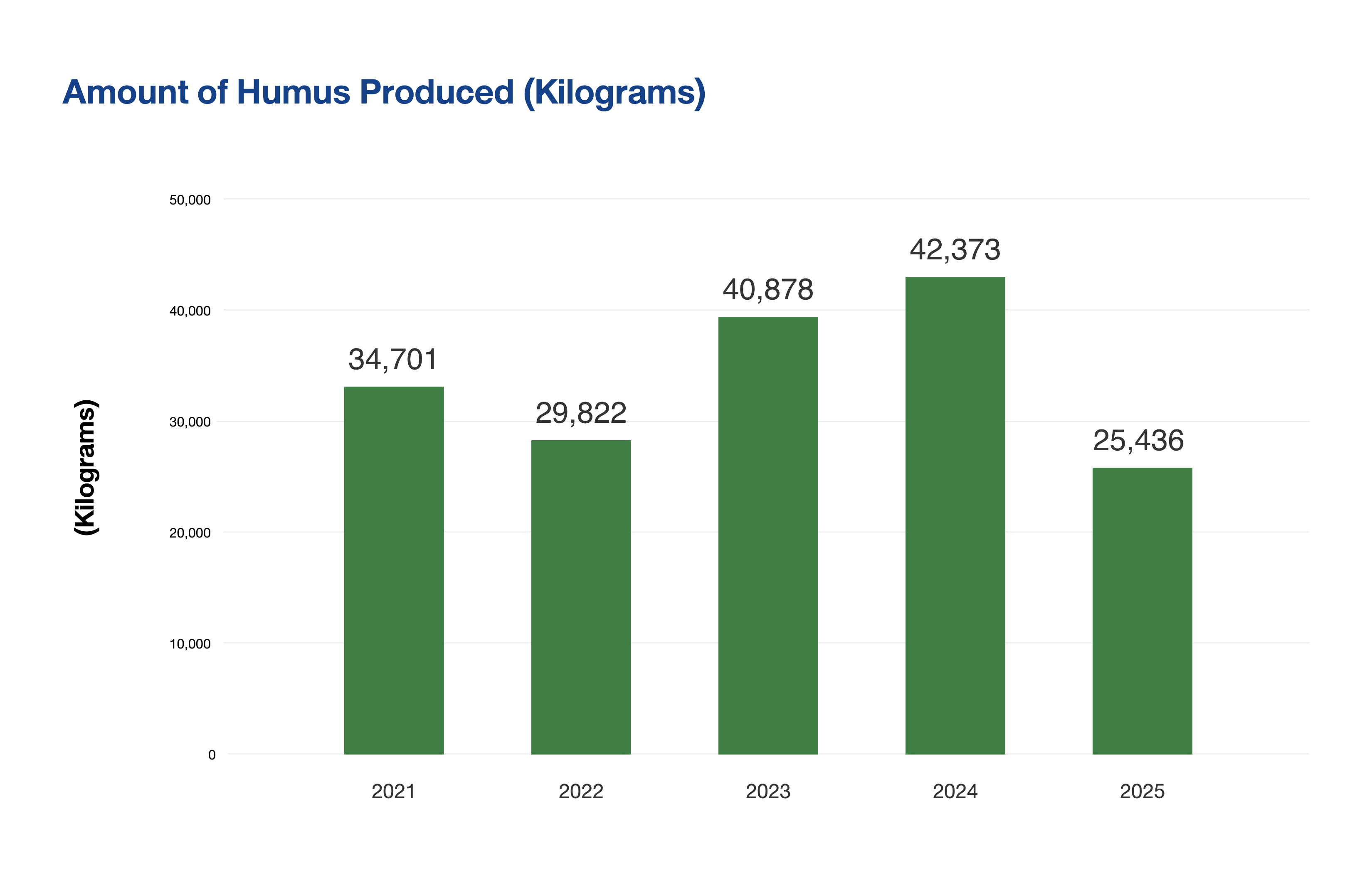
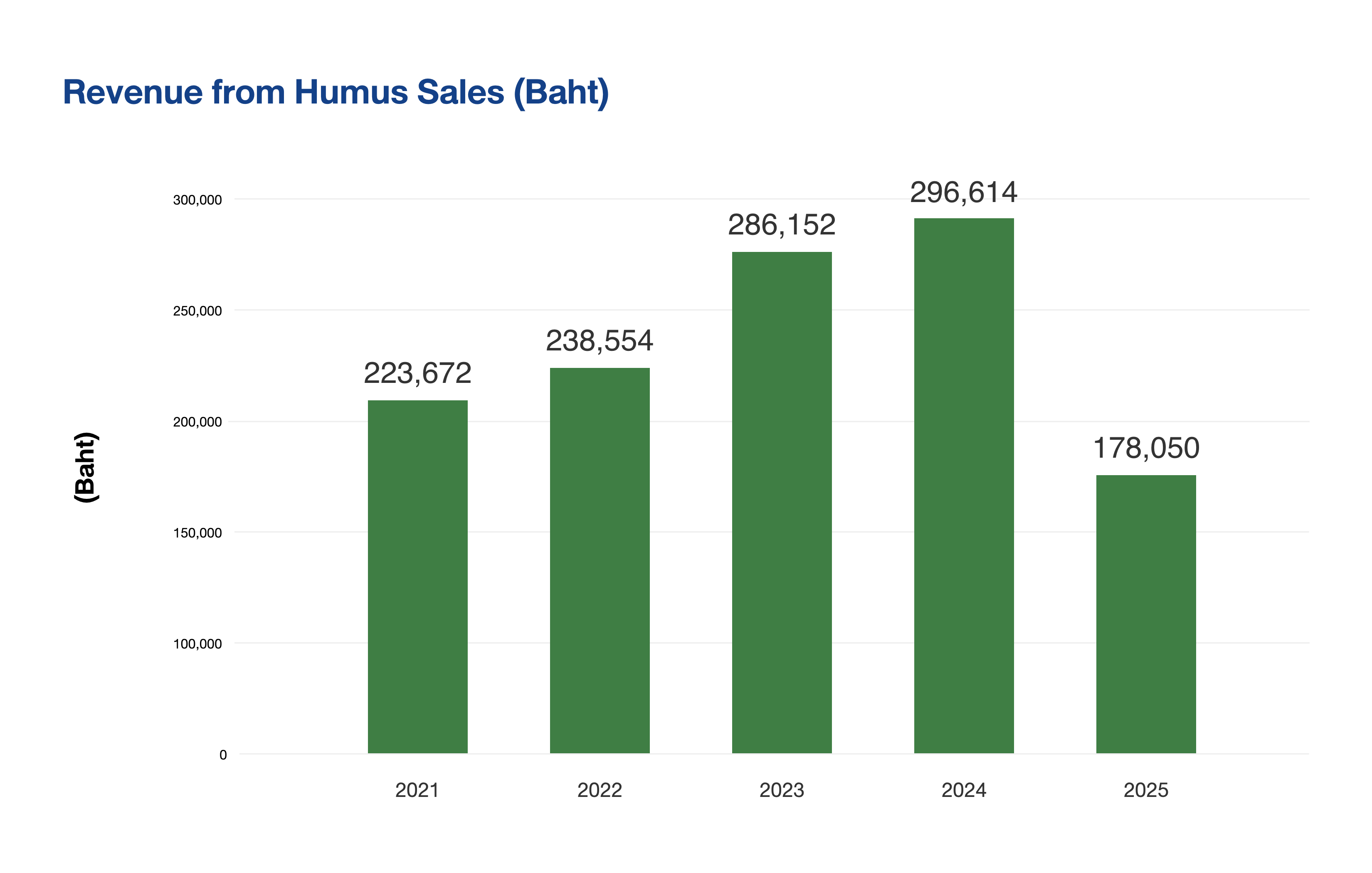
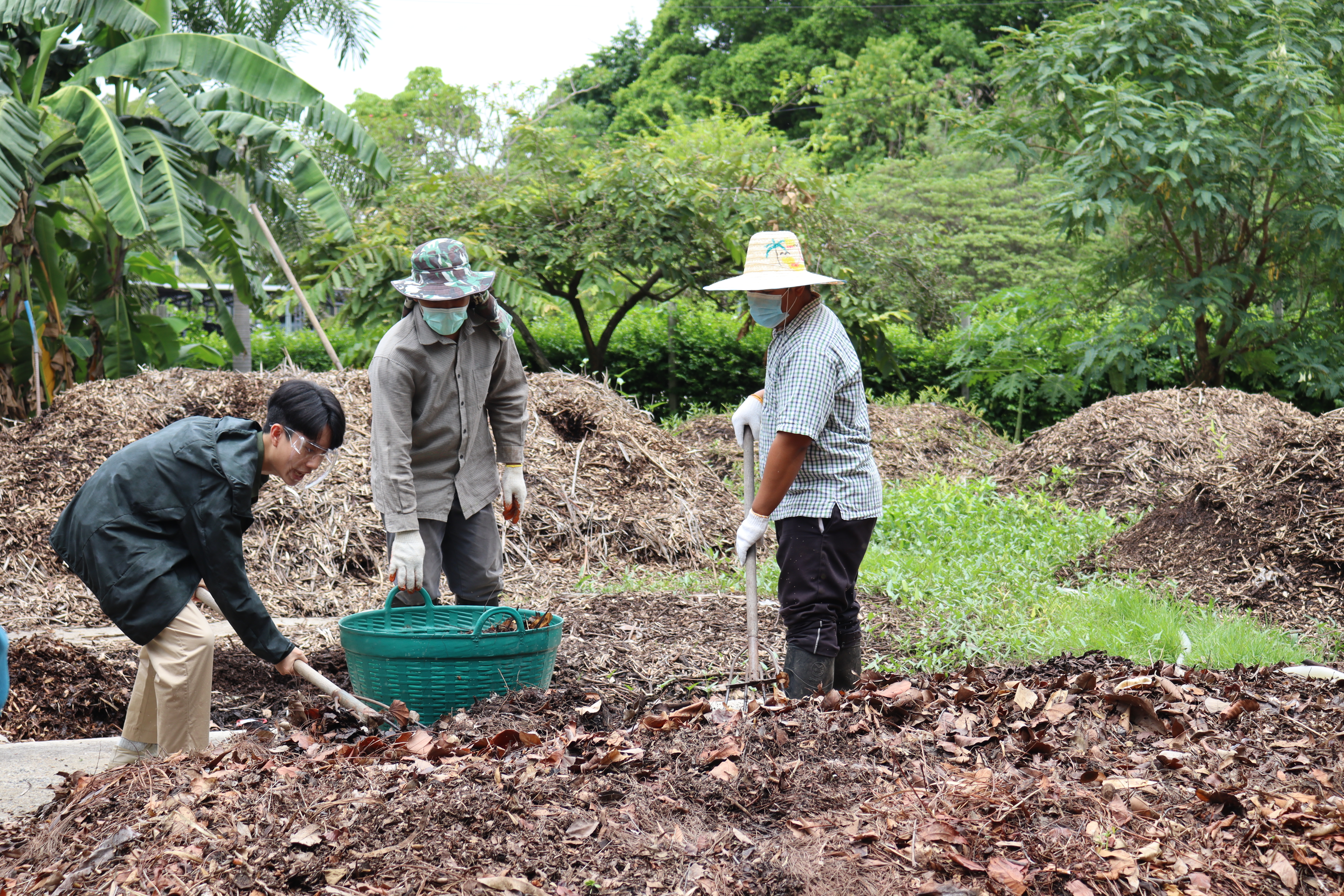
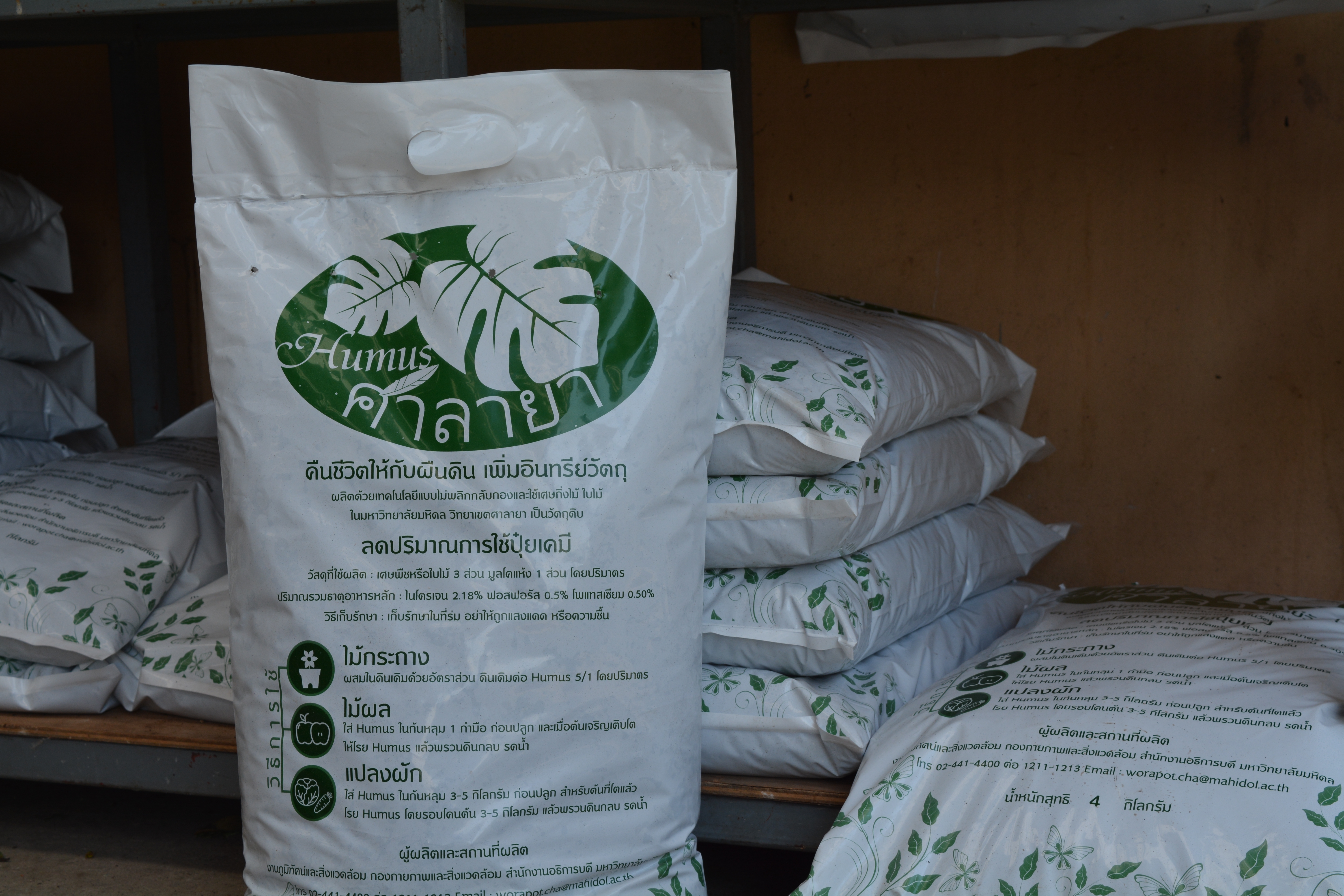
The Environmental Conservation Building became the first location at Mahidol University to produce "bio-fermented water" in 2009, by combining effective microorganisms (EM) with molasses for three days. The benefits of bio-fermentation water can be used in wastewater treatment, eliminate bad odors from garbage, and is used to restore abandoned land by using microorganisms to accelerate the decomposition of organic matter in the soil to make the soil in good condition. It is offer at the rate of 5 baht per liter, since its inception, total sales have exceeded 93,000 THB, with the earnings benefiting Mahidol University’s environmental conservation activity fund Mahidol University.
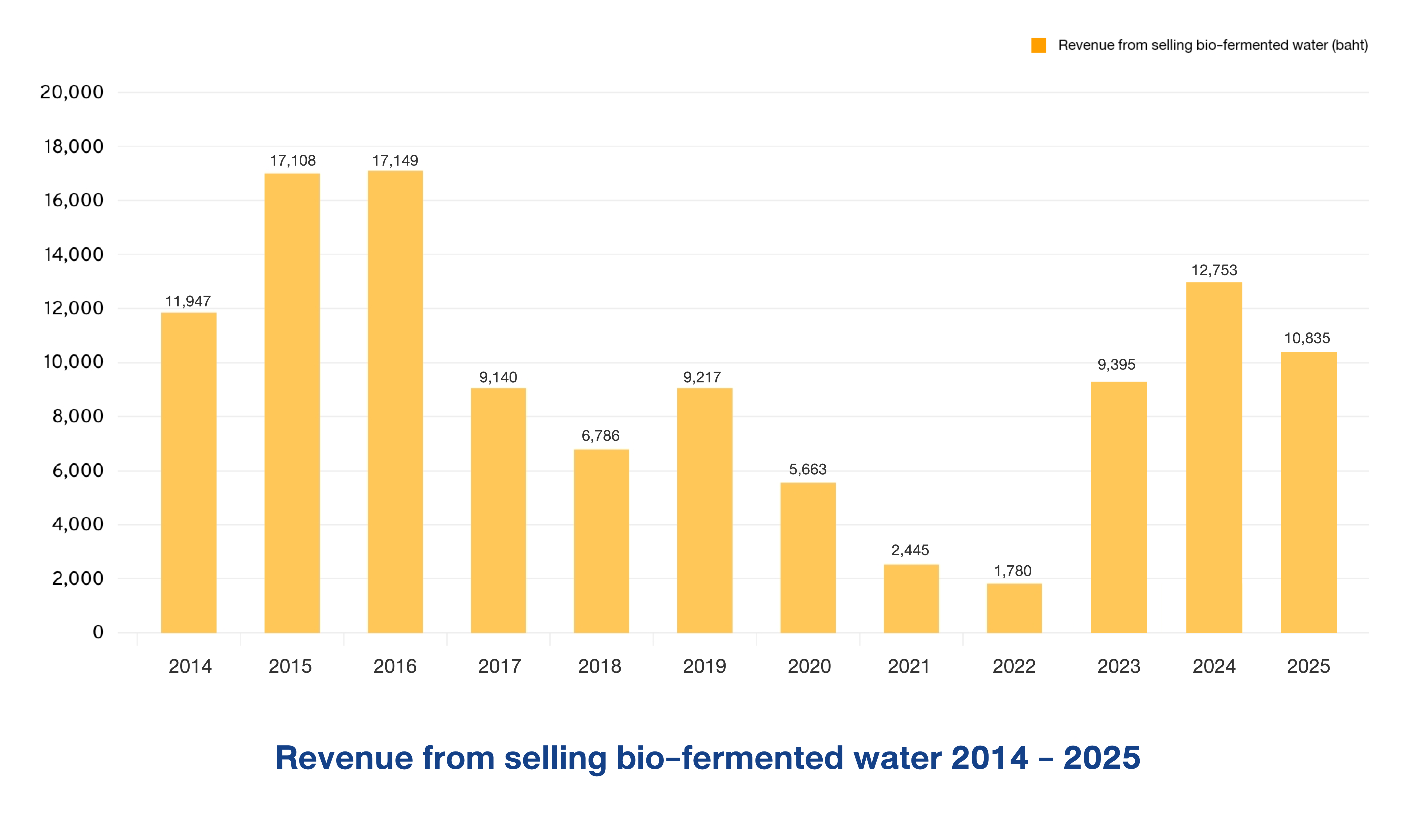
Hazardous waste from communities refers to discarded materials, deteriorated products, or waste from residential areas, government offices, educational institutions, or other community spaces that contain or are contaminated with hazardous substances. These may include toxic, flammable, corrosive, radioactive, or disease-causing chemicals that pose risks to both living organisms and the environment. Examples of hazardous waste currently found on campus include batteries, fluorescent bulbs, paint cans, and spray cans, which can cause environmental contamination during storage, transportation, or disposal. The university separates hazardous waste from other solid waste and sends it to authorized companies for proper disposal according to international standards.
Additionally, the university provides separate bins for electronic waste, such as mobile phones, tablets, laptops, keyboards, earphones, and calculators, due to the increasing use of electronic devices driven by rapid technological advancements. Electronic waste can be dismantled for component recovery, and the remaining parts can be disposed of properly in compliance with international standards.
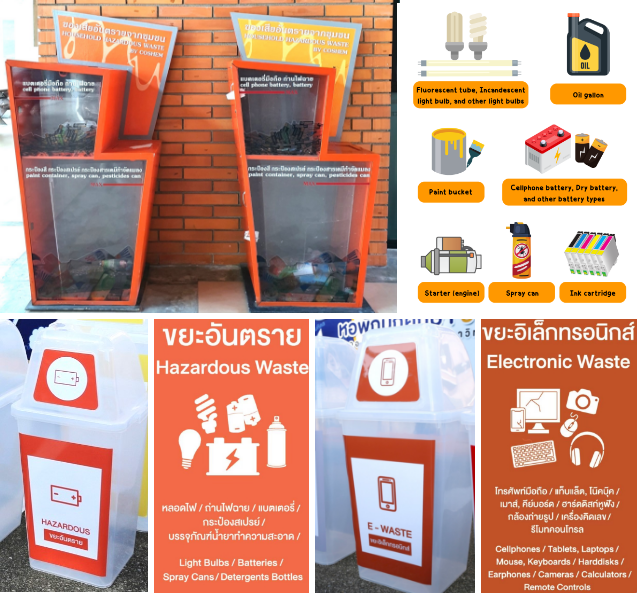
Infectious waste refers to solid waste contaminated with pathogens in sufficient quantity or concentration to cause disease upon contact. At Mahidol University, Salaya, infectious waste is disposed of in red bags with clear labels or symbols. Personnel handling this waste are required to wear protective equipment such as face masks and rubber gloves. Infectious waste must be double-bagged, with each layer tightly sealed and disinfected before being taken to designated collection points every Thursday. The waste is then handed over to authorized companies for proper disposal in accordance with international standards.
